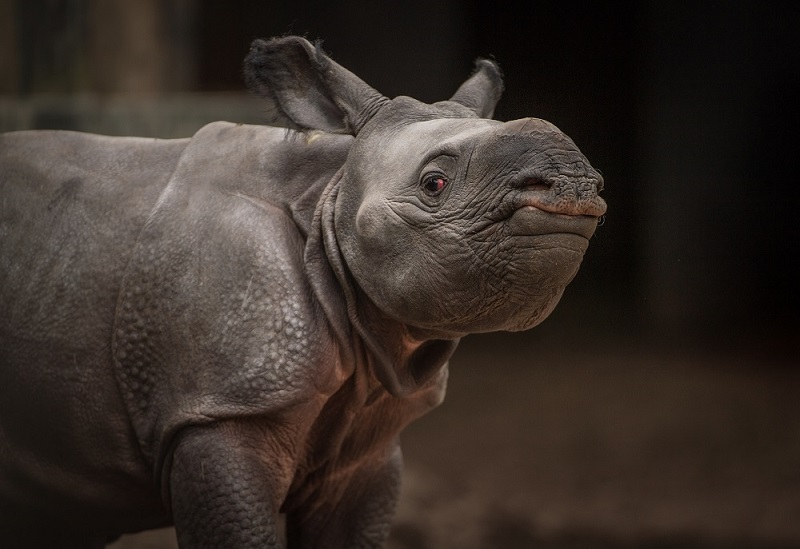The birth of a rare greater one-horned rhino calf has been captured live on Chester Zoo’s CCTV. The male calf arrived to mum Asha (11), following a 16-month gestation and a 20-minute labour. Zoo conservationists have hailed the birth of the “precious, bolshie newcomer” as a big boost to the endangered species breeding programme, with the greater one horned rhino listed as vulnerable to extinction by the International Union for the Conservation of Nature (IUCN).
“Greater one-horned rhinos are a vulnerable species and every new calf is ever so special. This is a momentous new arrival,” said Tim Rowlands, Curator of Mammals. “Rhinos around the world are under increasing pressure due largely to the senseless poaching of their horn. We need more people to be aware of their plight and join us in the fight to end the slaughter and ensure these magnificent animals are around for the future. Asha’s precious new arrival, which is already developing into quite a bolshie little character, will hopefully go some way to keeping rhinos and the surrounding issues in the spotlight.”
As rhinos are threatened in the wild by the illegal poaching of their horns and habitat loss, Chester Zoo became part of a breeding programme coordinated by the European Association of Zoos and Aquariums (EAZA), which focuses on sustaining the greater one-horned rhino population.
“At one stage, the greater one-horn rhino was hunted almost to extinction and there were less than 200 in the wild. Thankfully, steps to protect them were taken just in time and today there are around 3,500 in India and Nepal,” said Mike Jordan, Collections Director. “That number though is still desperately small and they continue to face threats to their long-term survival. As with the rhinos in Africa, they are targeted for their horns by poachers and much of the land where they once lived has been taken over by humans. It’s therefore vitally important that we act for wildlife to ensure the population doesn’t dip to critically low levels again.”



